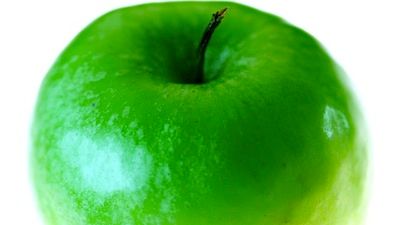BBC Documentaries
Apples: British to the Core (2011x109)
: 15, 2011
Horticulturalist Chris Beardshaw uncovers the British contribution to the history of our most iconic fruit. He reveals the passion and dedication of Victorian gardeners who in an apples ‘golden age’ gave us more varieties than anywhere else in the world; and the remarkable ingenuity of a small group of 20th century British scientists who made one of the most significant contributions to the apple industry the world has ever seen.
The apple has a more complex genetic make up than any other fruit. If you plant the pips from the apple in your lunchbox they almost certainly won’t turn into trees bearing identical fruit. Every single pip is potentially a new variety which could fall anywhere in the spectrum of small and sour to big and juicy. Some of the world’s best-loved apples like Braeburn and Bramley were discovered growing as chance seedlings - Granny Smith was found growing out of a rubbish tip by Mrs Smith of New South Wales. So while the apple seeks only to multiply rather than reproduce the same delicious apples, man fathomed how to clone it with an ancient process that remains the same to this day.
Chris’s journey takes him from Britain’s most famous and time honoured apple tree - the original Bramley from which all Bramley apples are descended; to a new contender discovered growing in a hedgerow on the A4260. He meets the Head Gardener at Audley End House in Cambridge, a man bent on preserving the spirit of the Victorian nurserymen who toiled away in the kitchen gardens of the nation’s stately homes creating thousands of new varieties; and goes underground in Kent to explore the remarkable contribution made by scientists at East Malling Research Station in the early 20th century. Their work is captured on fascinating film archive, showing the extraordinary lengths they went to give tired British orchards a facelift. The Malling series of rootstocks became the foundation of the global apple industry as we know it, allowing the most successful v
